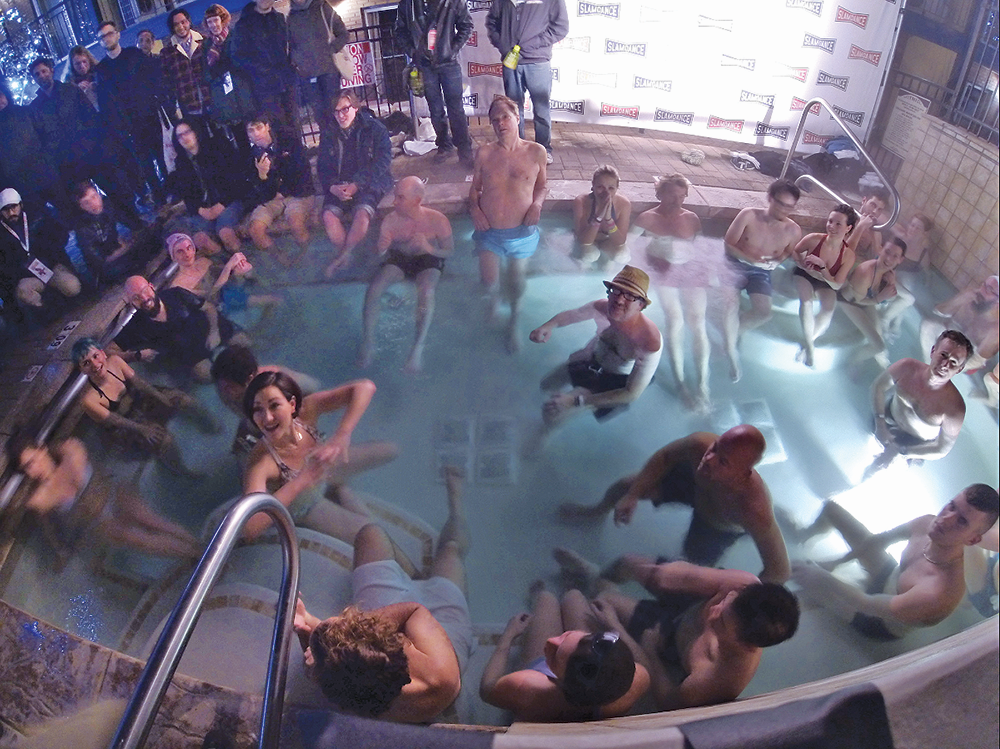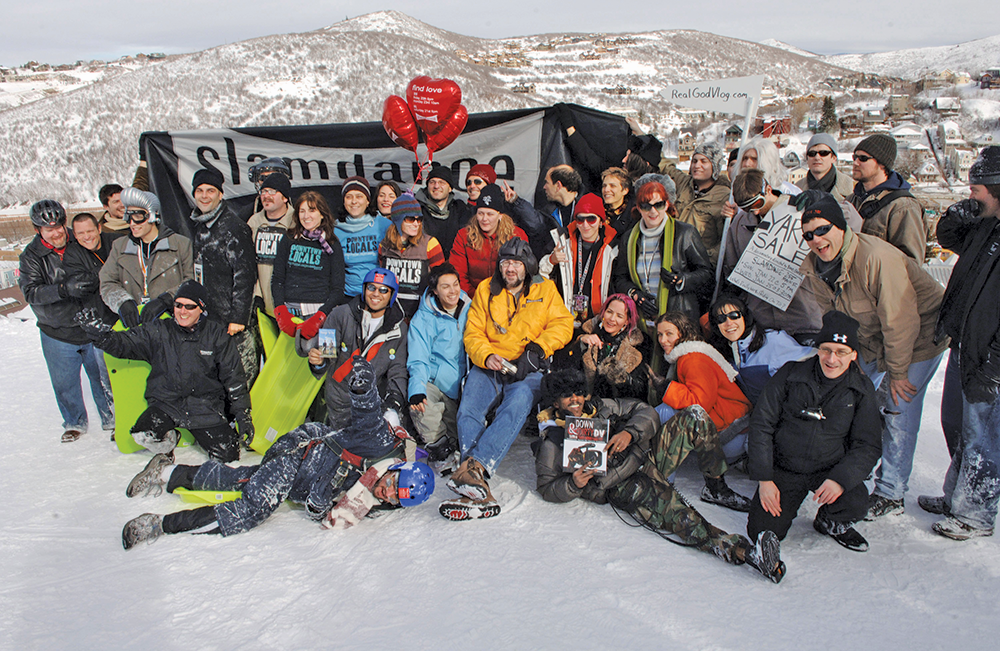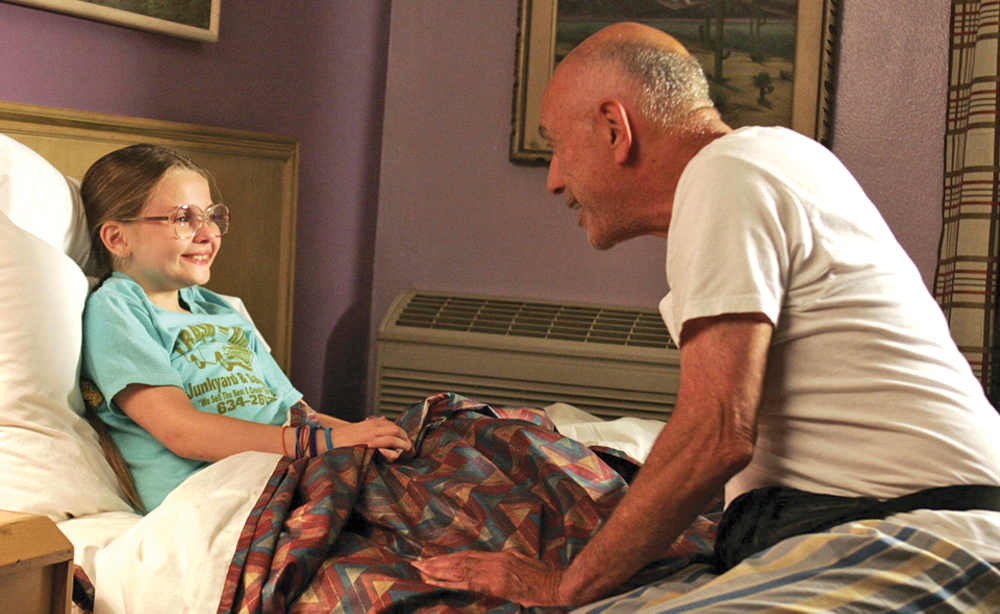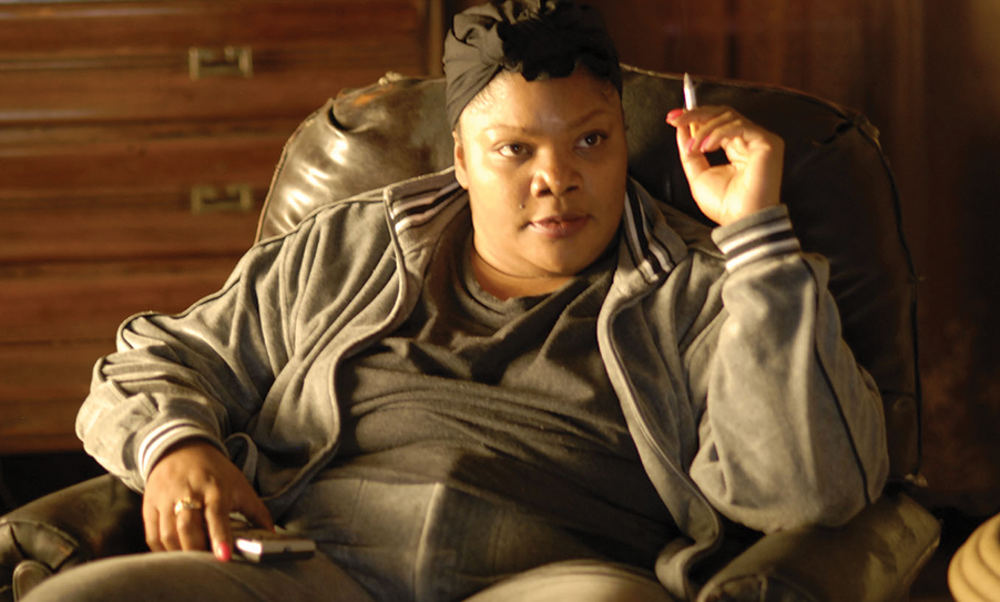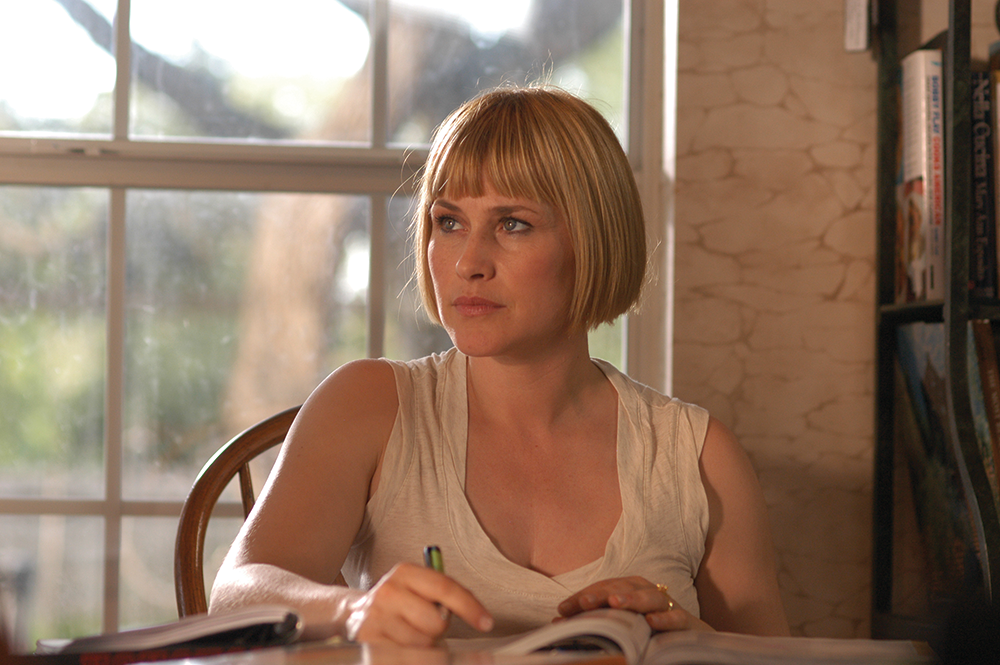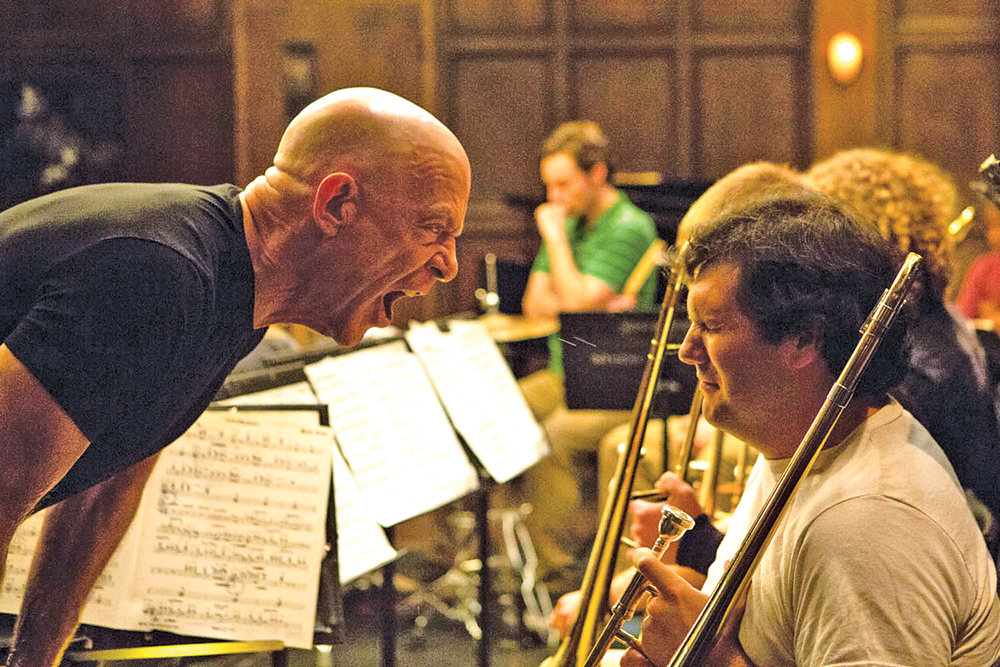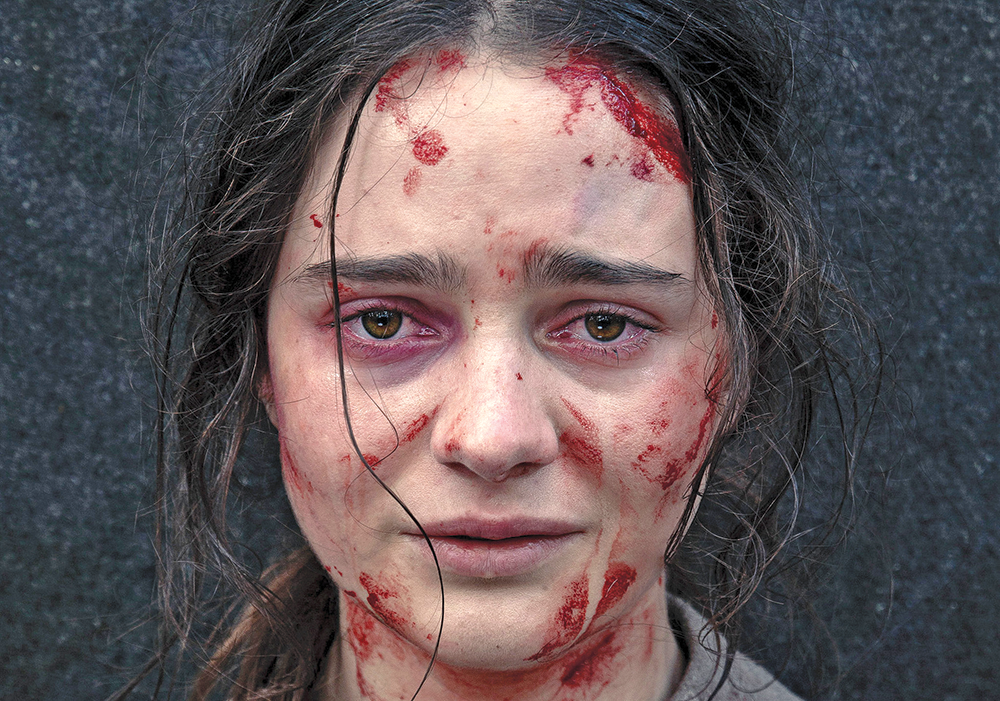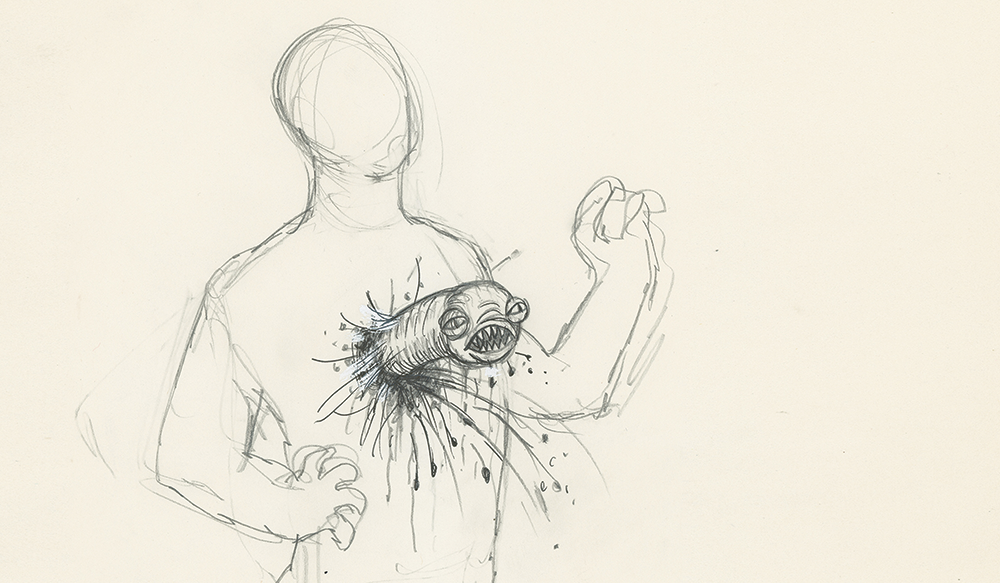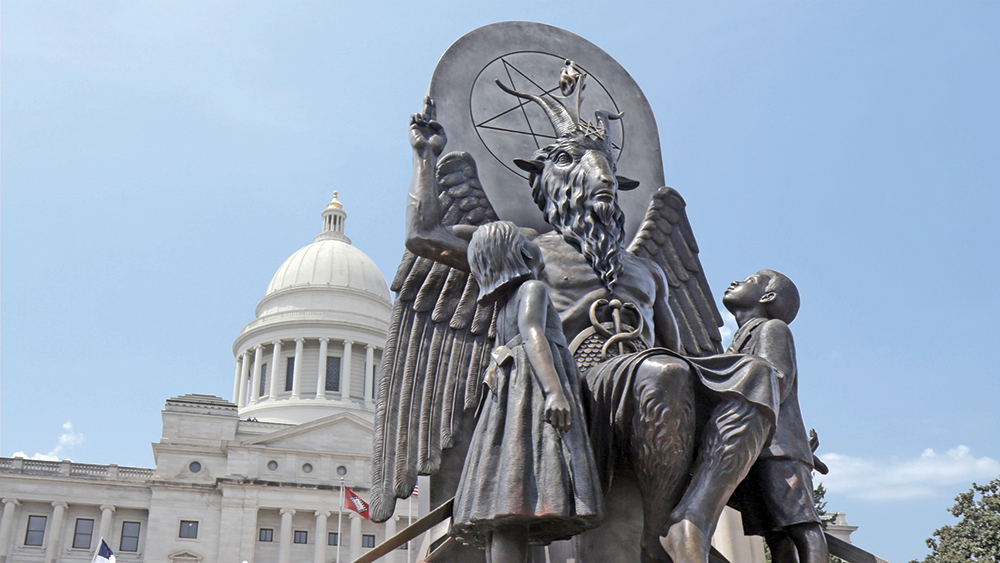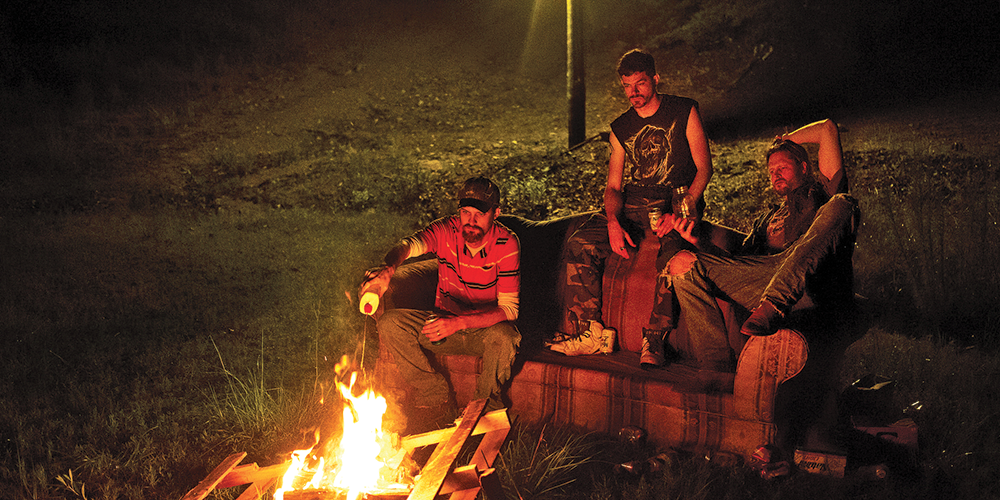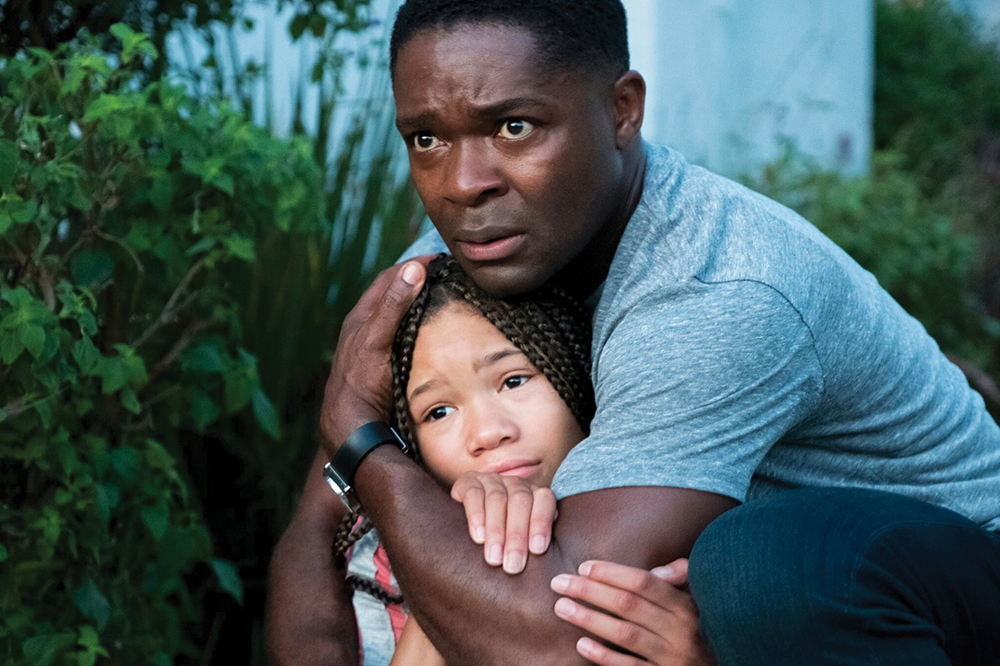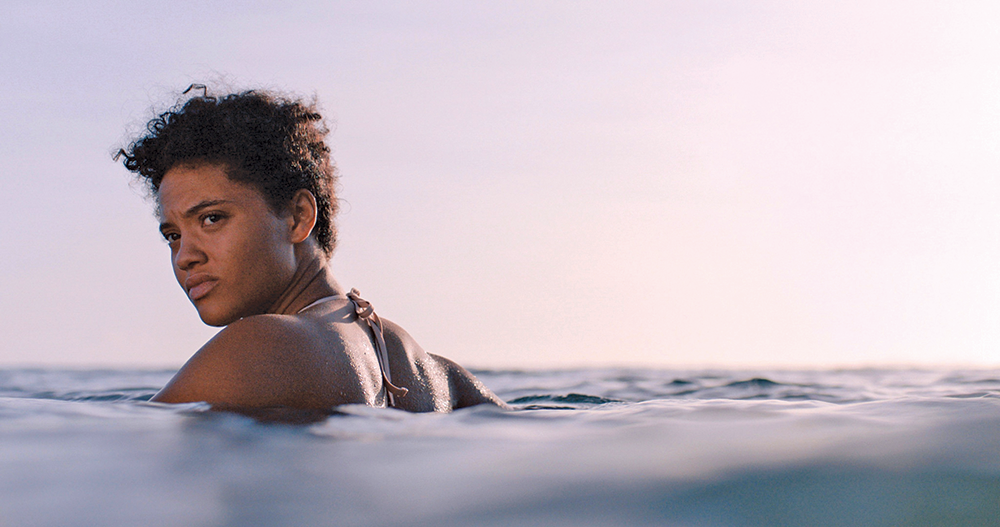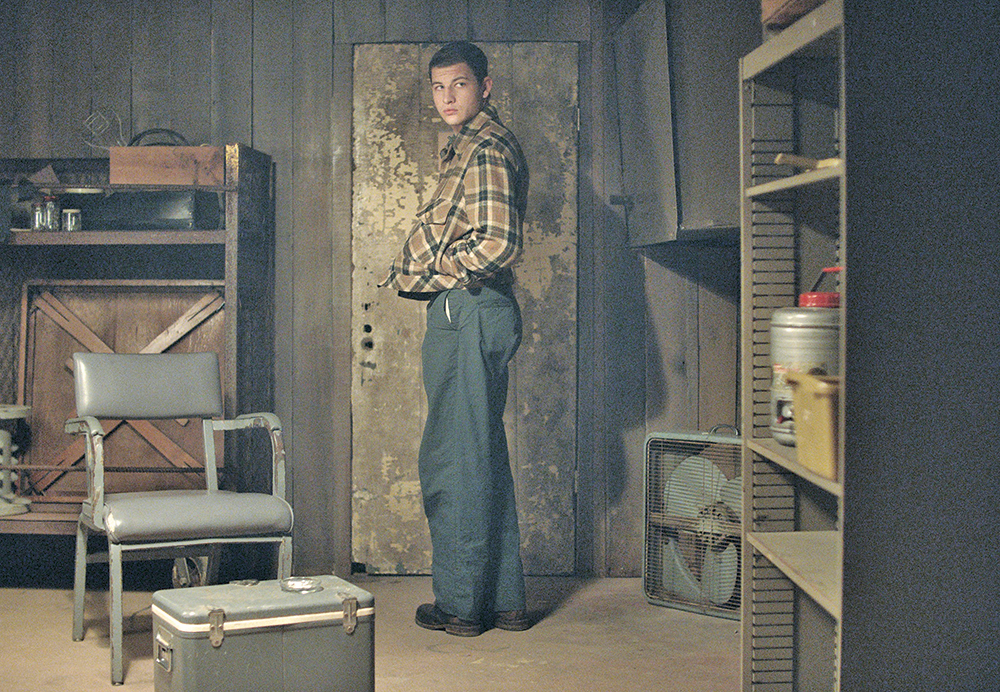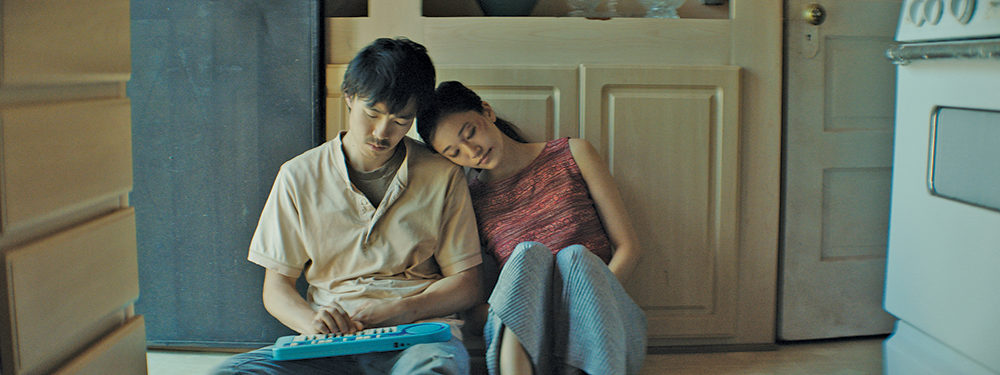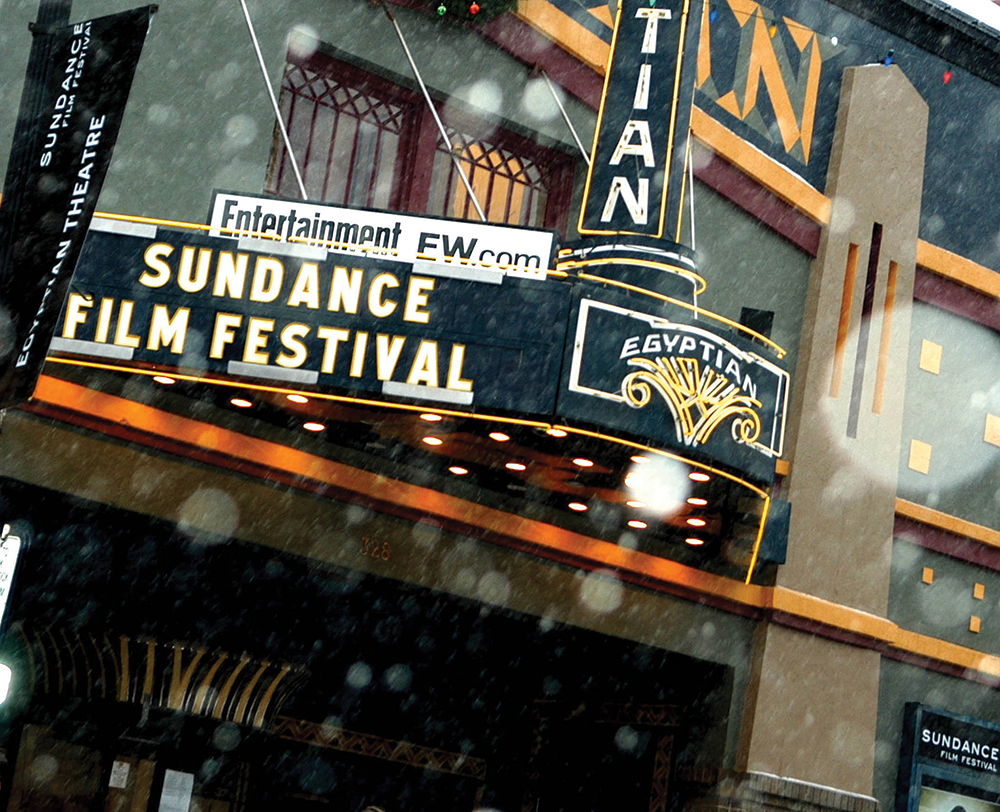Year
Ah, Park City in January. A place where an artist's dreams can come true, and logistical nightmares can reign. But mostly, it's a place of stories—both the stories movie-lovers get a chance to experience on film festival screens, and the stories that emerge from the experiences of creators and attendees in this crazy high-altitude environment.
City Weekly offers its annual preview of festival week (beginning Jan. 24) with a chance to look forward and backward. On this 25th anniversary year of Slamdance, we talk with some of its founders about how the upstart festival was born. You'll also find a reminder about some of the great Sundance performances that crossed over into Oscar nominations and wins, and a guide to some of the 2019 Sundance filmmakers who have brought their work here before. And, of course, there are tips and tricks to help you get the most out of these major events in our backyard.
So pull on your best black clothes and practice your "don't you know who I am?" voice. If you set out to explore the wild world of independent filmmaking, who knows what stories you'll bring home?
-Scott Renshaw
Slamdance at 25: An Oral History
Festival co-founders reflect on going guerilla in Park City.
By Scott Renshaw
This year, the Slamdance Film Festival celebrates its 25th installment. Three of the festival's co-founders—Peter Baxter, Dan Mirvish and Shane Kuhn—spoke with City Weekly, reflecting on how they came to launch an alternative to Sundance in the festival's own back yard.
Before Slamdance
Before there was any idea to start a festival, there were simply filmmakers trying to create their work and get it out into the world.
Peter Baxter: I started to make short films while I was at college [in England], though I wasn't studying film. I was very interested in working in the film industry. But at that time, unless you were connected, and knew someone in the film industry, it was very hard to get a leg up. So I was working as a photographer also. I started to do that as a post-graduate. I was working in New York and also London, and managed to get a green card from the place where I was working in New York. I came to L.A. and met a writer, and I made Loser, with Kirk Harris the producer.
Dan Mirvish: I grew up in Omaha, Neb., and went to college in St. Louis at Washington University. They only had one or two film classes there, and I really liked it. I took summer school classes at UCLA; it smelled like eucalyptus and opportunity. They taught me how to use a 16mm camera. Then back at Wash. U, they had a student group that showed films every night—classic, foreign, cult films. I had been involved with that for most of my time there, but now I was the one guy on campus who could use a 16mm camera, so I shot the "Coming Soon" and "No Smoking" trailers. Then I moved out to D.C.—I had been involved with journalism in college—and got a speechwriting job for [former senator] Tom Harkin. But if you stay in D.C. for too long, they give you a three-piece suit and a law degree, so I applied to film school, and got into [University of Southern California]. The summer after my first year there, I got a job on a very low-budget kickboxing movie in the Philippines. There's an old adage that you learn more working on a bad film than working on a good film. So in the span of just a summer vacation, I learned how to make a movie from beginning to end.
Shane Kuhn: After graduating from college, I went to film school in London for a year, mainly to figure out what part of that business I wanted to work in. I'd always been a writer. After going to school in London, I got into the [American Film Institute] screenwriting program. Mark Waters, Darren Aronofsky, [cinematographer] Matthew Libatique were in my class. And while I was in film school, that was like the second wave of independent filmmaking. When I was in London, that was when I first became aware of independent filmmaking as a thing. Richard Linklater was in London promoting Slacker, and I actually interviewed him for my film school newspaper. And he told me, "Whatever you do, do not go to film school." But I did anyway. While I was at AFI, these other independent films were getting notoriety: Laws of Gravity [and] Slacker, of course. That seemed like the right thing for me.
The Road to Park City
The would-be filmmakers get to work on the projects they dreamed would get them to Sundance.
DM: In the early '90s, if you made a short film, people would go, "That's great, kid; get back to us when you make a feature." So my second year of film school, I said, "Screw making a short." I went back to Omaha, and I knew a lot of local actors there that I was still friends with, but I needed a local producer. There was this guy Dana Altman—and by the way, his grandfather is Robert Altman. And Altman became our mentor on the film. A friend of mine had told me about a great location called Carhenge. I thought, great, we start in Omaha, come up with a road-trip story [called Omaha (The Movie)]. We were pretty happy with it.
SK: I thought to myself, because I was in the screenwriting program but was always interested in directing—I was a photographer before I went to film school—I'll do what these [independent filmmakers] have done: I'll raise money. I raised about $80,000, and made probably the worst movie ever made, called Redneck.
The Founders Meet
The co-founders take their movies to the Independent Feature Film Market in New York in September 1994, hoping to be discovered and get their invitation to Sundance.
DM: At the time, before Vimeo, you would go to IFFM, do screenings, distributors would go, and more importantly, film festival programmers would go. The goal was to get Sundance programmers to see your movie. The year before, Kevin Smith was there with Clerks, Sundance programmers saw it and discovered it, and suddenly he was Kevin Smith. There were 95 completed feature films that showed there [in 1994], plus a number of works in progress.
SK: My producer friends watched an unfinished version of [Edward Burns'] The Brothers McMullen. After we watched it, we thought, "Thank God that's not our movie."
DM: So if it hadn't got into Sundance, it wouldn't have gotten into Slamdance.
[The Brothers McMullen went on to become the hit of the 1995 Sundance Film Festival.]
DM: It was kind of Sundance or nothing. We had one distributor come up to us and say "We love it ... if you get into Sundance." So we realized that was kind of the paradigm at the time: If you got into Sundance, you'd get an agent, you'd get distribution, you'd get into other festivals.
PB: It was very important, because back then, there were far fewer film festivals than there are today. If you didn't get in [to Sundance], you wouldn't have an opportunity, if you didn't have star power, didn't have a budget. They had made huge inroads into attracting the industry to the festival. Even at that time, films that were beginning to play at Sundance, that was becoming the new competition for emerging filmmakers.
DM: The other thing that happened at IFFM, Dana Altman was kind of feeling a little bit alone out there. When you make your own film, you're in your own little bubble; whatever city or town you're making it in, you're all alone, you don't need anyone's help. It's only when you take it out in the world that you need anyone to help you. Dana had this kind of unique idea to create some forum where all of us filmmakers, spread out around the country, on some grassroots level, help each other out. We called this sort of impromptu meeting with about 15-20 other filmmakers at the Angelika [Film Center]. September '94, before the internet, before IndieWire. People were barely getting cell phones. A lot of us that ended up starting Slamdance were at this New York meeting. We talked about, "What are we going to do if we don't get into Sundance?" ... Sundance in the end, when they announced their list, of the 95 films at IFFM, Sundance didn't take any of them. We thought we were going to get in; we were one of the "buzzy" films.
Coming Up with Plan B
The rejected filmmakers try to decide what to do next.
PB: The year before, Matt Stone & Trey Parker had gone to Park City with Cannibal! The Musical, and played it in a conference room at the Yarrow Hotel. So that provided some inspiration.
DM: We had the same lawyer as Stone and Parker, so we heard about it through them.
SK: I was sitting around thinking, I had known some people who had gone up to Park City and shown movies in hotel rooms. My producing partner was thinking, maybe we could do that. But I was thinking, maybe we could talk to all these other people, and I knew none of them had gotten in to Sundance. Maybe we could bring a whole bunch of movies.
DM: Shane calls me up at 8 in the morning: "Why don't all of us go to Park City and help each other out, combine resources and put on a festival there?" ... A week before the Sundance list came out, I thought, "If I get into Sundance, I'm definitely going to need boots." So I got some, and now I've got to use these boots.
PB: Like everyone else, we didn't get our film into Sundance, and we wanted a showcase for our work. We wanted to make a change, and we wanted to make a change for others who wouldn't have a showcase for their work.
SK: Basically, it was my concept, but I wasn't sitting around thinking we were going to revolutionize everything, grand thoughts about what this was going to be. We all had selfish motivations: We wanted to get our movies recognized, and it would be better to do it as a group than as individuals. But eventually, we realized it was bigger than us. And it was fueled by this incredible naiveté and ignorance, that I thought my movie was actually worthy of Sundance.
DM: One of the other guys in New York was Jon Fitzgerald. We were spitballing names; I came up with "Loserfest '95." Brendan Cowles came up with Slamdance.
SK: I talked to Dan immediately, because he was the guy who could do the press. We really had nothing organized yet, other than "let's do our own collective festival there." Dan wrote the press release, faxed it to a bunch of outlets.
DM: AOL was just kind of starting. I had a connection at Variety, so we got a front-page story in Variety, which was one of those news services where AOL was distributed. AOL had picked up the Variety story. More filmmakers started to find out what we were up to. We didn't have a website, we didn't have a phone number or an address, so how would people get in touch with us? I was working at a Good Guys store as a Christmas job, and people stopped by to drop off tapes with me. ... The funny thing is, everyone thought, "If I didn't get into Sundance I guess I'm in [Slamdance]." We did reject films, even in the first year.
What Will Sundance Think?
The founders and others wonder about how Park City's big festival will react.
DM: As soon as it started to look more real, some people panicked, thought they were going to get blacklisted. We thought, "We didn't get into Sundance anyway, we've got nothing to lose."
SK: Keep in mind this was a kind of risky proposition. [Then-Sundance director] Geoff Gilmore left this phone message that was kind of threatening: "I don't think you guys should do this."
DM: For years, Shane kept this tape.
SK: A lot of people around us were like, "You're going to make more films, right? You'll never get into Sundance if you do this."
PB: There was definitely a sense of "there goes the neighborhood" when we showed up. We have to appreciate what [Sundance] had done in terms of establishing their event. To create something like this takes tremendous effort. But you can't care what others have to say—other artists, a festival organization or both—if there's something you want to change. And we were determined to do that.
DM: Dana called up Robert Altman, said, "We've got this idea for this renegade festival, but people are concerned they're going to piss off [Robert] Redford." Altman thought about it for a second and said, "Eh, fuck 'em." So we had his blessing.
PB: [The relationship with Sundance] has warmed, but it still can be a little chilly. We've always, where possible, been open to trying to combine and express the spirit of what we stand for. I think generally over time, what happened is that people at Sundance realized that we're obviously serious about what we do, that we're not here to upset what they're doing. I think they see us as doing good things for the filmmakers we support. We don't battle with Sundance; we don't have a sense of competition.
Finding a Venue
The new festival was now in motion; there was just the small matter of where it would be.
DM: The original plan—and Shane was the one who kind of came up with this idea, he had spent a year at University of Utah—was to screen at the university. All of our films were on 35mm or 16mm; they had actual screening rooms with actual projectors. We thought, "We can screen there." We looked at a map: "Salt Lake City, it's right there, people will just come down the mountain from Park City." ... We all got a big condo in Salt Lake; Shane and I drove up from L.A. together.
SK: We held this press conference, and there were a lot of press there, and I was terrified: "Oh my God, this is on the record, and people are writing this down, and we have to be careful what we say." It's no longer just, "Hey dudes, let's put a fucking festival together." It suddenly had this face that was going to be presented to the public, and it had to look right and sound right. I was worried we were going to look like a bunch of amateurs.
DM: We were doing these screenings in Salt Lake, but by the first night we realized, nobody's coming, just a handful of people. So a couple of our filmmakers said, "This is bullshit, we gotta be screening our films up in Park City." So we rented a 16mm [projector] from somewhere and rented a screen, too. The car was a little Honda hatchback and had the screen sticking out the window, so there was snow blowing in the car. We tried to find a venue, and the second place we went was Prospector Square. It was late at night, and some teenage bellhop, when we asked if they had a ballroom we could use, said, "Sure, why not?" The main Prospector ballroom, before the Eccles, was Sundance's main venue. So we were 30 feet down the hall. We got on the pay phone there, called down, told everyone to haul ass up here, we have a venue. We did keep screenings going at the University of Utah, because that was the only way to show the 35mm films. By the third or fourth day, I got a call from a filmmaker who had just heard about us: "My short is on 35mm, I brought a projector, and I'm up at the Yarrow." Congratulations, you're in Slamdance. So then all of us could screen in Park City. Which is ridiculous, for a first-year festival to have three venues.
The Aftermath
The Slamdance braintrust decides what happens next.
PB: After [the first Slamdance], there was this discussion of whether it should continue. It was only supposed to be a one-off event. We had no clue, really, how to organize a festival. Most of us had never even been to one. There was a lot of positive energy, but also naiveté, but the energy had been an important ingredient.
DM: We thought, "Why don't we do this again next year?" Baxter had proven himself as a good producer. Why don't we go down to Yarrow's front desk and put a deposit down for next year? Peter had a credit card, so that cemented Peter's involvement.
SK: In the beginning, I didn't have a grander concept beyond that first festival. We were caught off guard by how it took hold. Probably after that first year, we all had a lot of big ideas about what we wanted to do.
PB: Year one, we pulled it off, showed that we could do this. Even films from the first year got distribution. The film I produced ended up showing in over 50 theaters.
DM: The next year, Jon [Fitzgerald] was technically in charge, Peter very much working with him. We kind of ran the festival out of Jon's apartment in Santa Monica. I was like, "Good luck, guys." I was one of the filmmakers that good things came out of [Slamdance]; my film ended up on the festival circuit. It was largely Jon and Peter that second year at the Yarrow. Because I was on the circuit more than the other guys, at SXSW I met Steven Soderbergh. I was kind of afraid to meet him. He's like Mr. Sundance; isn't he going to hate us? On the contrary, he was like "I love you guys!" He had had a falling out with Redford at the time and was also getting soured on the studio system. He said, "I have this crazy little low-budget film I'm working on, Schizopolis, I'm producing this other film (Greg Mottola's The Daytrippers)." Because of that connection, we showed Daytrippers.
PB: [The Daytrippers in 1996] attracted a lot of industry attention, and sold [to a distributor] out of Slamdance, and sold well. It showed that a film here could do just as well as a film at Sundance ... There have been various stages in the festival where I thought, we're progressing, we're growing. But personally, I never take for granted from one year to another that anything and everything is going to be fine. To ever get comfortable and feel like, "That's it, we've got it," is always going to be a mistake. It's about being open to certain changes that your community needs. [Baxter continues to serve as the festival's director.]
SK: I probably was involved for like the first three years more heavily. Then I moved to San Francisco and was out of it for a bit. I'm still part of the board. [Kuhn is a novelist whose books include The Asset, Hostile Takeover and Casual Friday.]
DM: I stayed active for about the first seven years. The way we do our programming is very unique, all by alumni filmmakers, and it's very decentralized. Every film gets seen by at least two different people, and there are these committees where nobody has any more influence than anyone else. When I started to have kids, it was a lot harder for me to do that. There were enough other alumni; it doesn't have to be me. I've still gone every year. [Mirvish continues working as an independent filmmaker, most recently 2017's Bernard and Huey.]
PB: I do love Slamdance and this community. We're looking at the next 25 years, and I want to be involved as long as I can be, as long as the organization will have me.
SK: The way it's run is still very much about trying to give a voice to first-time directors. That's something I really like about it. But there's more ability to do that now than back then. There are all these extensions of that original idea: Let's look for creators that are looking for a break, and give them that break ... The thing about Redneck is, even though it was the worst movie ever made, it was kind of one of the foundations of Slamdance. Whenever I think about what a terrible failure it was, at least it resulted in Slamdance.
Sundance Oscar AlumsA look at the honored performances that emerged from festival films.
By David Riedel
It's January; the movie industry's a dead zone. Studios dump the dreck into the multiplexes, the critics have handed out their self-important awards, the Golden Globes have come and gone in all their non-glory, and we have a short respite from Oscar prognostications.
So, to paraphrase Christian Bale's Golden Globes acceptance speech, thank Satan for the Sundance Film Festival! It arrives at just the right time, providing critics and audiences thrills, spills, chills and some other word that rhymes. The Brothers McMullen notwithstanding, Sundance has showcased some damn good movies filled with wonderful performances.
For example, in the past 20 years, movies that made their debuts at Sundance have received 32 Oscar nominations in the acting categories, with five wins. That's a pretty impressive total. More impressive is that the winners are a truly fine bunch.
Take Alan Arkin. The 2006 Sundance favorite Little Miss Sunshine is what I consider the nadir of filmmaking; its characters are loathsome (particularly Greg Kinnear's, whose natural unpleasantness makes the character even more foul), they don't resemble real people, and the best gag in the picture is lifted from National Lampoon's Vacation. But Arkin makes it all bearable. His hour of screen time before his character's demise is a godsend. His nasty grandfather is strangely lovable, so much so that when he dies of what's presumably a heroin overdose, it's actually affecting. It's also a serious bummer, because the movie's final 40 minutes doesn't have his wisecracking to offset the bullshit of seeing the family push their beater Volkswagen bus down the highway for the millionth time. Arkin's Best Supporting Actor Oscar win gives the movie cachet it doesn't deserve, but he's good enough for us to sit through the parts he's not in.
Speaking of loathsome characters, Mo'Nique won a Best Supporting Actress Oscar for her performance as Mary in the 2009 film Precious. Mary, Precious' mother, is so monstrous it's hard to believe people like her could exist—though they do; take a look at the White House. But Mo'Nique infuses her with enough pathos (without dipping into bathos) that her final teary showdown with Mariah Carey's social worker elicits pity. That's quite a feat considering Mary subjected Precious to years of physical, emotional and sexual abuse.
Another Oscar award-winning performance for an inhuman character went to J.K. Simmons for his role as Terence Fletcher, the asshole music instructor who beats his students in Whiplash, which premiered at Sundance in 2014. How can someone win a Best Supporting Actor Oscar while playing a man who's so ruthless he goes out of his way to ruin his student's lives? Maybe it's because his competition was Foxcatcher, The Judge and Birdman (and Boyhood in the form of Ethan Hawke, who gave an outstanding performance in an outstanding film).
Or maybe it's because Simmons is so goddamn good you root for him even though he's the villain. I mean, who are you gonna root for instead? Bitch-ass Miles Teller? Really, Whiplash is filled with characters who are so rotten you wonder how they function in real life; my one gripe with the movie is that none of these musicians seems to care much about music.
On the other side of humanity's spectrum is Olivia Evans, the character that earned Patricia Arquette a Best Supporting Actress Academy Award for Boyhood. Olivia is the title boy's mother, the movie's emotional center, and Arquette gives one of those performances that's so brilliantly understated it's a miracle the Academy awarded an actor who faded into the scenery instead of chewing it to bits (see: Emma Stone in Birdman or Meryl Streep in Into the Woods, two other nominees from the same year). When Olivia dissolves into tears shortly before her son heads off to college, it's a well-deserved emotional moment for a character who, faults and all, has made sacrifice after sacrifice for her family.
Lastly among the Oscar winners, there's Casey Affleck, who was awarded the Best Actor Oscar for his role as a grieving father in Manchester by the Sea. Affleck's ick factor aside (it's hard to think about him without also thinking about the sexual assault allegations made against him), his performance is a highlight in a movie overflowing with excellent performances. His character is one of the most emotionally damaged to ever hit the big screen, and Affleck is excellent in the role.
But forget about the Oscar winners for a moment. There are 27 other Sundance-movie performances that received Academy Award acting nominations, many of which are just as worthy as the winners. For my money, it's difficult to find a movie more uniformly excellent than In the Bedroom, Todd Field's 2001 heartbreaker about the way violence and resentment corrupt the soul. Sissy Spacek, Tom Wilkinson and Marisa Tomei were all nominated in acting categories and all failed to take home a statuette. Spacek lost to Halle Berry in Monster's Ball, and Wilkinson to Denzel Washington in Training Day. It's hard to argue with those results, but Tomei lost out to Jennifer Connelly from A Beautiful Mind, a good performance in a corny movie. Such is life.
Sundance movies also have a solid streak of introducing us to new gotta-watch performers. Laura Linney, Jennifer Lawrence, Amy Adams, Abigail Breslin and Melissa Leo all made their marks via Sundance movies for, respectively, You Can Count on Me, Winter's Bone (if you haven't seen it, do), Junebug, the afore-shit-on Little Miss Sunshine and Frozen River. Lawrence and Leo went on to win Oscars for subsequent roles. Adams, Breslin and Linney are all still waiting, though I'm stunned Linney didn't pick one up for her role in Teenage Mutant Ninja Turtles: Out of the Shadows.
Finally, I'm making special mention of Quvenzhané Wallis' Best Actress nomination for Beasts of the Southern Wild. She holds the distinction of being the youngest Best Actress nominee ever, at 9 years old. Plus, I got into a long-deleted minor Twitter beef with disgraced former CBC Radio host Jian Ghomeshi about her nomination (my argument: She was nominated, who cares about her age?), so I feel like I have skin in the game. What say you?
Now that I have to wait a few weeks to see what the most honored Sundance performances for 2019 will be, I'm kind of chomping at the bit. Until then, I have tons of movies to revisit in anticipation. Happy festival-going! Save me a spot in line for Big Time Adolescence.
Pedigrees in Park City
Veteran Sundance filmmakers bring new movies this year that deserve a look.
By Scott Renshaw
Every year, industry insiders and movie-lovers descend on Park City for a chance to see the Next Big Thing before that thing becomes big. It's a showcase for work by artists who are often unknown or just starting out—and that can make choosing your movies more than slightly challenging.
Some Sundance features, however, come from filmmakers who have been here before, or simply have at least a bit of a track record worth looking at. Here's a look at a handful of Sundance 2019 films where you might have at least a little sense of what to expect based on their creators' previous work.
The Nightingale
Synopsis: Revenge thriller about an Irish convict in 1820s Tasmania who enlists the aid of an aboriginal tracker to find the people who brutalized her family.
Director: Jennifer Kent
Also known for: The 2014 Sundance horror highlight The Babadook, a tale of grief manifesting in the form of a monster. The stunningly directed debut wasn't just the scariest film of that year's Sundance, or the best debut feature; it was the best film of the year, period.
So you might expect: Something grim and terrifying but still genuinely emotional, served up with true cinematic artistry.
Memory – The Origins of Alien
Synopsis: Documentary look at the story behind the creation of the 1979 horror/sci-fi classic Alien, including the germ of the original script idea that was almost never finished.
Director: Alexandre O. Philippe
Also known for: The 2017 Sundance Midnight documentary 78/52, a deep dive into the structure and cultural resonance of the infamous "shower scene" from Alfred Hitchcock's Psycho. It was a close reading of a film text with an engaging enthusiasm and insight.
So you might expect: A lesson in film history that avoids stuffy academic discourse in favor of a look at why certain creepy things get so deeply under our skin.
Hail Satan?
Synopsis: Documentary exploration of the Satanic Temple, and the way its members have taken their controversial beliefs to the forefront of the "separation of church and state" culture war.
Director: Penny Lane
Also known for: The 2016 Sundance documentary Nuts!, a fascinating profile of inventor/entrepreneur/snake-oil salesman John Romulus Brinkley, which combined visual imagination in its animated re-creations with a tale of pirate radio and impotence cures.
So you might expect: An unconventional approach to an unconventional subject, one that treats strangeness with a welcome sense of humor but also as an absolutely worthy topic of conversation.
The Death of Dick Long
Synopsis: A pair of friends in a small-town Alabama band, Zeke and Earl, try to keep it a secret when their bandmate Dick dies, but they're a bit too dumb for a successful cover-up.
Director: Daniel Scheinert
Also known for: The love-it-or-hate-it 2017 Sundance feature Swiss Army Man—yes, the one with Daniel Radcliffe as a talking, farting corpse—co-directed with Daniel Kwan. Sure, it was irreverent, but it also managed to dig into the insecurities that keep so many relationships on a superficial level.
So you might expect: Another dark comedy that finds humor in a dead body, giving Scheinert a leg up on being America's poet laureate of Weekend at Bernie's-inspired philosophizing.
Relive
Synopsis: A detective (David Oyelowo) investigates an apparent murder-suicide involving his young niece and her parents—after he receives a telephone call from that dead niece, from the past.
Director: Jacob Estes
Also known for: The 2004 Sundance thriller Mean Creek (about teenagers plotting revenge on a bully) and 2011's The Details (a weird, dark domestic comedy with Tobey Maguire fighting raccoons). Estes also directed the not-so-great 2017 Rings, which attempted to reboot The Ring horror franchise.
So you might expect: With this guy, who knows? He clearly likes traveling through strange, dark territory, but at times seems to lose his grip on his material.
Sweetheart
Synopsis: A young woman (Kiersey Clemons) is stranded on a deserted island, where she's hunted by a creature that comes out of the water at night to feed.
Director: J.D. Dillard
Also known for: The 2016 thriller Sleight, about a teenage street magician and part-time drug dealer who needs to use his skills after he gets in over his head. It's a slick, low-budget variant on a superhero origin story, with solidly directed performances.
So you might expect: Another spin on genre tropes—this time, both a survival drama and a monster thriller—that takes those tropes in creative directions, with a talented young actor at the center.
The Mountain
Synopsis: In 1953, a teenage Zamboni driver (Tye Sheridan) joins a lobotomist (Jeff Goldblum) on a tour of rural mental hospitals as the doctor tries to drum up business.
Director: Rick Alverson
Also known for: Most recently, at Sundance 2015 for the Gregg Turkington collaboration Entertainment—about a bitter touring comedian—and before that at Sundance 2012 with The Comedy, both of which emphasize Alverson's fondness for almost aggressive anti-comedy.
So you might expect: More of the same, based on that synopsis. Either you want to see the guy who directed Entertainment directing Goldblum as a lobotomist, or you don't.
Ms. Purple
Synopsis: Estranged Korean-American siblings in Southern California are pulled back together to decide how they must care for their bedridden father.
Director: Justin Chon
Also known for: The 2017 Sundance Next Audience Award-winning Gook, about racial tensions in a Los Angeles neighborhood between Korean-American store owners and their mostly African-American customers during the era of the Rodney King verdict.
So you might expect: Character-based drama with a vivid sense of place and cultural specificity, anchored in the Korean-American immigrant experience.
How to Sundance 2019
It's not too late to be part of the festival with these tips and tricks.
By Scott Renshaw
Every Sundance year has its own feel—sometimes determined by the weather, sometimes by the political winds that are blowing, sometimes even by the movies themselves. Other things, however, remain relatively consistent, making it possible to navigate the festival—whether in Park City, or at Salt Lake City venues—with the benefit of insight from someone who has been attending since the 1990s. Here's a look at the basics for how to Sundance, whether it's your first time or your 22nd.
What's New in 2019. The main difference this year is the timing of the festival, which is getting started a week later as part of the agreement between the festival and Park City to avoid scheduling the festival during the tourism-lucrative Martin Luther King Jr. holiday weekend.
For locals, the Best of Fest screening tickets that had previously been distributed in person at the physical box office locations will now be part of the eWaitlist process (see "Seeing a Movie" for more details).
How to Get Around. Navigating Park City during Sundance week is a nightmare, and that's if the weather conditions are ideal. Traffic can be brutal on the main arteries of Park Avenue, Kearns Boulevard and Main Street. There is exactly one officially designated parking area—the China Bridge structure on Marsac Avenue—and it's ridiculously expensive ($40 per day, with no re-entry permitted) and likely to fill up completely by early morning on any given festival day. There are two park-and-ride options outside of Park City limits—Richardson Flat (off the Kearns Boulevard exit from Highway 40), and Ecker Hill (2500 Kilby Road, off the Jeremy Ranch exit from I-80)—that offer free shuttles to, respectively, the Eccles Theater and the Kimball Junction and Park City Transit Center stops.
If you still feel like braving Park City in your own vehicle, make your trek up the mountain as early in the day as possible. Find one of the limited (and free) street parking spots in Prospector Square, in the general vicinity of the Park City Marriott festival headquarters. Then leave your car and take the festival shuttle buses everywhere you need to go. Word of warning: Try to avoid heading out of town during the peak 4–7 p.m. period, no matter whether it's a weekday or weekend. Bumper-to-bumper traffic is expected, as locals getting off work and day skiers combine with festival traffic to create a perfect storm of frustration.
For a stress-free option, consider taking the PC-SLC Connect buses (UTA routes 901 and 902). The 901 leaves Saturday and Sunday only from the 3900 South (Meadowbrook) Trax park-and-ride at least twice daily to the transit center at Kimball Junction—where you can catch festival shuttles into town—and heads back down the mountain from the same stop. The 902 departs Salt Lake Central daily and stops at the Park City Transit Center. Best of all? The cost is a measly $4.50 per person each way, and someone else does the driving. (Visit rideuta.com for schedule and snow routing information; routes run limited hours each way.)
If you opt to do all of your Sundancing at Salt Lake City venues, you can still take advantage of public transportation. Three of the principal valley venues—Broadway Centre Cinema, the Main Library Theater and Rose Wagner Center—are a 10-15 minute walk from the Gallivan Plaza Trax stop. If you're headed from one of those clustered downtown venues to either the Tower Theatre or Grand Theatre, give yourself plenty of time for navigating weather conditions, parking (local streets around the Tower get particularly full) and making your way through the long lines.
Seeing a Movie. Oh yeah, you might also want to watch movies. Many screenings are officially sold out well before the festival begins, but in part that's to allow wiggle room for the many festival passholders who might attend any one of a number of films at a given time, and who might leave town before the end of the festival. That means taking advantage of waitlisting, which got considerably less stressful in the past few years with the addition of the eWaitlist. Download the official festival app, create an account, then select titles you want to see. You can get in the electronic queue for a movie two hours before its scheduled start time—on the dot, so have your trigger finger at the ready. Once you get a number for your virtual spot in line, you can decide whether you've got a good enough chance to make it worth your time to head over to the actual venue, where you'll need to be present no later than 30 minutes before start time, and have $20 cash only per ticket (or $10 for Kids section titles). Your odds for getting in will always be better at the larger venues—like Park City's Eccles Theater—as well as the earliest and latest screenings of any given day, when many festival attendees are either enjoying a party or sleeping off the previous night.
Of course, locals can also consider seeing the "Best of Fest" screenings on the Monday after the festival officially ends (Feb. 4, this year). Titles aren't announced until Sunday, Feb. 3, but they're all winners of festival awards, which certainly increases the odds that you'll see something great. Tickets are free, distributed via the festival's eWaitlist beginning two hours prior to each screening time (just like regular festival screenings). Valid Utah identification will be required for admission.
Stargazing: Celebrities turn up in Park City, most often to promote the movies that they're in, but sometimes just to be part of the festivities. Main Street is the center of gravity for such goings-on, and it's often easy to spot where the famous people are just by looking for clouds of paparazzi that seem to materialize out of nowhere. A lot of the time, you'll just pass a famous face on the street, or in a restaurant. But one of the easiest ways is simply going to their movie, especially if it's premiering at the Eccles Theater. Those screenings usually have a red-carpet photo-op before showtime, and if you're actually in the screening itself, look for the seats that have the "Reserved" signs and ropes over them. That's probably where you can spot your favorite actors getting ready to watch themselves on the big screen.




